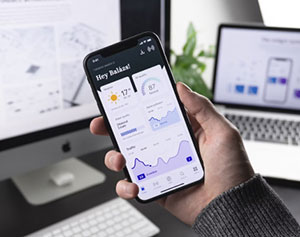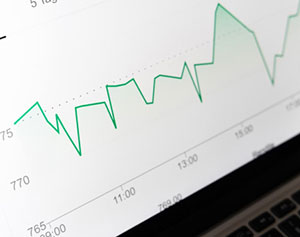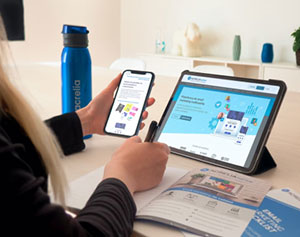Turning Moments Into Metrics: 6 Ways B2B Events Drive Growth and ROI

Blog post By Paula Chiocchi on 2025-09-24
For years, B2B events were seen mostly as brand showcases—valuable for visibility but hard to connect to measurable business outcomes. That perception has changed dramatically. Today, the most effective events are directly tied to KPIs, influencing pipeline, revenue, and customer relationships in ways that marketing leaders can no longer ignore.
On a recent episode of the B2B Influence Podcast, Katie Meyer, CEO of MoonLab Productions, unpacked how B2B events have evolved, sharing practical insights on designing experiences that move the needle and deliver measurable ROI.
Here are six key takeaways from the conversation with Katie:
- Events Influence the Entire Funnel
Events now impact every stage of the buyer journey, according to Katie. Large conferences and activations work well at the top of the funnel, while smaller, more intimate experiences—such as invite-only dinners—excel at building mid- and bottom-funnel momentum. These settings create a sense of community and even a fear of missing out or “FOMO,” where attendees feel privileged to be included, which in turn drives engagement and conversion.
Takeaway: Match event formats to your objectives and measure their effect on progression, not just attendance. That means tracking qualified leads, opportunity creation, and pipeline influence—not simply foot traffic.
- Digital and Physical Must Work Hand in Hand
Katie emphasized that no event exists in a vacuum. The most successful programs integrate digital promotion before, during, and after the physical experience. Campaigns often extend across social channels, city signage, email outreach, and post-event content. This continuity not only increases reach but also makes ROI easier to measure.
Forrester’s 2025 State of B2B Events Survey supports this view, noting that event teams face later registrations and higher attendee expectations, raising the stakes for integrated planning and measurement.
Takeaway: Ensure your KPI framework includes both physical engagement (e.g., scans, demos, in-person meetings) and digital metrics (downloads, retargeting clicks, content shares).
- Measurement Is No Longer Optional
Katie underscored what we all know to be true today in marketing: C-suites demand proof. Her team often helps clients track everything from registrations and QR-code scans to rideshare pickups connected to an event. Many clients reconcile those numbers with CRM data to connect activity directly to sales outcomes.
Takeaway: Define success up front—cost per qualified lead, opportunities influenced, and revenue generated—and make sure event data integrates with CRM and marketing automation platforms.
- Community, Not Just Campaigns
Katie highlighted the importance of sequencing events into a broader journey. She described strategies where brands start with digital teasers, move into live activations or pop-ups, and then cap the experience with an intimate dinner for top prospects. The result is stronger continuity and deeper relationships.
Takeaway: Think long-term. Measure not only immediate conversions but also repeat attendance, content re-engagement, and the growth of customer communities tied to events.
- Pop-ups Are Back—and Amplified
Katie also pointed to the resurgence of pop-up activations. By choosing high-foot-traffic locations and amplifying them on social media, brands extend reach far beyond those who attend in person.
Takeaway: Track both local impact (store traffic, in-person interactions) and amplification metrics (social reach, earned media, user-generated content).
- Bring Your Event Partner Into the Boardroom
Katie explained that helping clients justify event budgets is part of her job. As an events firm, her team often packages ROI reports that clients (marketing leaders) can take to the C-suite to secure future investment.
Takeaway: Treat event partners as extensions of your growth team. Ask them to help define KPIs, collect data, and present results in the language of business outcomes.
A KPI Checklist for B2B Events
Here are the measurement areas that every marketing leader should consider:
- Audience quality: Quantify your audience based on percent of target accounts, seniority mix, first-time vs. repeat attendees .
- Engagement: Track engagement metrics such as session dwell time for web page visits, scans, poll participation, and meetings set.
- Pipeline impact: Monitor MQL/SQL creation, opportunities influenced, revenue closed.
- Efficiency: Know your costs, such as cost per attendee, cost per lead, budget vs actual.
- Amplification: Stay on top of amplification metrics, such as social reach, press pickups, post-event content views.
- Community: Events build community, which in turn, instills trust in your brand -- and can impact your Net Promoter Score. Focus on elevating repeat attendance and driving ongoing participation .
Katie’s strategies are representative of a shift that’s now occurring in marketing, and her philosophy aligns with our own mission at OMI, which is “to deliver real data, real results, and invaluable reach to real people to our clients.”
The bottom line is that the role of B2B events – and B2B marketing overall -- is changing fast. Now, more than ever, marketing leaders must work to achieve and demonstrate revenue impact. It was a pleasure talking to Katie to learn how MoonLab Productions is doing just that. Go here to listen to or watch the full podcast episode with Katie.
We invite you to get in touch with our team at request@outwardmedia.com to start a conversation about elevating your business impact through omni-channel marketing campaigns fueled by custom, precision audiences, intent data, and much more.
DOWNLOAD YOUR FREE ebook
At OMI, we believe good things happen when you share your knowledge. That's why we're proud to educate marketers at every level - in every size and type of organization - about the basics of email marketing and the contact data that powers it.
-
The Executive's 15-Minute Guide to Building a Successful Email Marketing Database
-
A 15-Minute Guide to Fortune 2,000 Businesses and Executives
-
Five Best Practices for Using Email Marketing to Target SMBs



